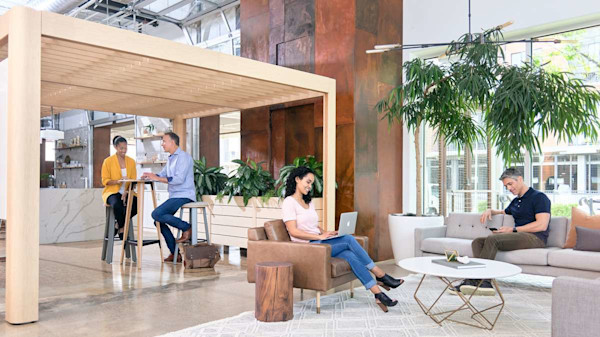How the Hybrid Workplace Model Promotes Sustainability

The hybrid workplace is becoming more and more common. We’re seeing companies transition to the hybrid model for many reasons. Sometimes it’s out of necessity and other times it’s just a way for a business to cut down on their overhead. One reason for making the transition that many don’t think about is sustainability. Limited attendance in the office reduces the need for space, limits energy usage, and leads to less travel time for employees. The hybrid workplace model can ultimately help companies and employees reduce their carbon footprint and promote sustainable practices. The practices used in the hybrid workplace require little effort to greatly impact the environment.
What is Sustainability in the Office?

Why Does the Hybrid Model Require Less Space?

The hybrid model saves employees time and energy, and it saves the company money and energy.
Staggered attendance and shared spaces allow multiple employees to make use of the same workspace. In a traditional office layout and design each employee usually has their own personal work area which means each employee takes up space in the office. Shared spaces create less of a need for physical space. With employees being able to work offsite, they don’t need to occupy physical office space as often.
The Hybrid Business Model and Energy

Technology that Makes the Hybrid Model Environmentally Friendly

What is driving the Hybrid Workplace Model?

Why Sustainability in the Workplace is Becoming the Norm

The hybrid workplace improves all elements of efficiency while contributing to a green initiative that ultimately impacts future generations.
Sustainable strategies allow companies to have a positive impact on the environment over the long term. In some cases, organizations are doing this by using both renewable energy sources and moving to electric vehicles. The hybrid model appears to be the most obtainable and seamless way for companies to positively impact the environment. Companies are becoming more and more environmentally conscious and are making small changes in their day-to-day. The hybrid model is one of the biggest changes a company can make.
Should You Go Green?

You might also like: Redefining Workspaces: The Comprehensive Guide to Hybrid Workplace Design Inspired Eco-Friendly Offices Incorporate Sustainable Furniture Sustainability Doesn’t Mean Spending a Lot of Green What Is A Hybrid Workplace? The Future Of Work



